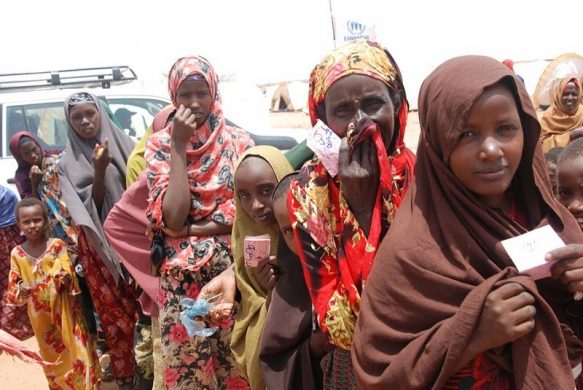GENEVA, 10 January 2017 (UNHCR): More than one million Somali refugees who have been displaced from their homes for decades are becoming despondent as they continue to be unable to return home and donor support is growing fatigued, according to the United Nations refugee agency.
“There is a growing sense of helplessness in the camps because people are feeling forgotten,” said Mohamed Abdi Affey, the Special Envoy to the Somali refugee situation for the UN Office of the High Commissioner for Refugees (UNHCR).
20 år i flygtningelejre
The Somali refugee crisis is one of the longest-running in the world, with people who have been displaced for more than 20 years. Some one million live in camps throughout the Horn of Africa, while an additional 1.1 million are displaced within Somalia.
“There has been some real progress in Somalia over the past few months, including the successful organization of elections inside the country,” acknowledged the Special Envoy. “What’s needed now is to build up infrastructures across the country so refugees do not suffer when they go back.”
UNHCR is backing a regional summit, led by the Intergovernmental Authority on Development (IGAD) in Eastern Africa, which will take place in March to determine lasting solutions for Somali refugees. A proposed regional response would provide continued protection to 262,000 Somali refugees in a camp in Kenya that has been hosting people for more than 20 years. When a decision was made last year to close the camp, UNHCR lobbied the government with a new plan of action and successfully delayed its closure.
“Nobody wants to be a refugee forever. A regional solution is the most viable solution for the Somali situation,” said Mr. Affey.
Mr. Affey, who previously served as the Deputy Foreign Affairs Minister in Kenya, spoke in Geneva yesterday following a visit to Somalia and to refugee camps in Djibouti, Kenya, Ethiopia, and Uganda, where 905,060 Somalis live – some since the 1990s. He also visited Yemen last month, where refugees face increasingly desperate conditions in a country torn apart by war.
Bistanden forsvinder til andre kriser
Because of emergencies elsewhere – particularly in Syria and South Sudan – donors have been unable to continue their support.
“Meanwhile, hunger is growing; meanwhile, frustration is growing; meanwhile, desperation is setting in and people are becoming angry,” reported the Special Envoy.
In addition to dwindling food rations, Mr. Affey said that the ongoing drought in East Africa has led to further complications, including limited access to education and skills training, especially for young people.
“Refugees should be skilled enough, trained to prepare them for an eventual return so that they can participate in the reconstruction of their country. So that they don’t go back after 30 years without skills – within the camps we must create these conditions and possibilities.”
UNHCR began supporting the voluntary return of Somali refugees from Kenya in 2014. Since then, a total of 39,316 have returned. However, Mr. Affey noted that security and socio-economic conditions in many parts of Somalia are not yet where they need to be in order to support large-scale returns. He appealed to the international community to strengthen efforts to build stability in a country that has suffered under more than two decades of armed conflict.















